The True Value of a Sports Specific Program
Athletes enroll in sport specific programs for several different reasons, but the majority of the athletes ultimately want to dominate in their sports by becoming faster and stronger. As a strength coach, our goal is to exploit the limitations of each athlete and improve upon them. In this installment, we are going to discuss the true value of sports performance training program.
Athletes come into the facility on day one and expect to warm-up, lift heavy weights, and go home. This is not the athlete’s fault; this is a predetermined notion that is set through the “get strong, fast, and big in 12-minutes” workout. Let’s face it; any coach can get someone stronger and faster. Anybody can stand there and tell an athlete to do 50 push-ups and 10 hill sprints every weekday for 4 weeks. The athlete will get stronger, faster, and possibly bigger, especially if the athlete’s prior daily regiment was sitting on a couch playing videos games after school. Not every coach can make you move more efficiently.
As a strength coach, our first goal when you walk in the door is to prevent injury. If you get hurt in the gym and aren’t able to play your sport, we failed as a strength coach. This means that all of our exercises that are selected to be in the program must limit the risk of injury. Athletes must feel comfortable and safe with the movement they are asked to perform. The need to feel safe is extremely important for several reasons, and if this need is not met, the athlete’s potential will be limited. It is the coach’s responsibility to fulfill this need through developing a positive relationship with their athletes in order for the athletes to begin dominating.
Once this trusting relationship has been formed, the training program can be implemented; starting with the assessment process. The assessment involves a movement/neutrality screen, as well as a baseline performance test. This gives a direction to individualize a program that decreases the risk of non-contact injuries, and cleans up dysfunctional movement patterns. The athlete must be aware of their body during these corrective exercises that are tailored to them. If the athlete is simply going through the motions during this portion of the training, and doesn’t understand the importance of these fundamental drills; the athlete is limiting their foundation in which they build their strength, power, endurance, and agility upon. If there are compensated patterns, the athlete is using a submaximal motor program that is not efficient and causes unnecessary stress, which can lead to injury. The assessment process should be continued throughout the entire program to track the athlete’s progress. If the desired results aren’t met, the program needs to be altered.
When mobility is no longer the major limiting factor, we mainly focus on proximal stability. When our center of mass is off balance then we’re off balance. If we can create stability in the torso and hip, then we have the ability to produce a lot of power from this area with little wasted energy. Throughout the entire program, core stability must be present or the body will compensate with a different pattern. It takes time, practice, and effort to understand how to engage the core during each lift. Core stability will not come overnight, it is a major concept that must be understood and developed by the athlete. Athletes may have to regress them progress in order to develop these fundamentals which are key in developing a monster athlete.
Stability and mobility are the driving components that are needed before performance and skill aspects can be developed. Developing a strong foundation will allow athletes to dominate in any sport they play. Getting the body to have distal mobility and proximal stability cannot be over looked; it is the true value in a sport specific training program.
By,
Michael Donoghue

